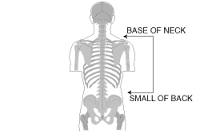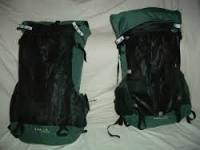backpack 3500 cubic inches

Your selection of a backpack depends on materials, construction, and features. Find out what’s best for you.How To Buy A BackpackThe keys to buying a backpack are fit and capacity. While fit should be determined by your body type, capacity (the types and amount of gear a pack is capable of carrying) should depend on intended use and length of trip. Here is what to look for to determine what backpack is right for you.Pack styles and usesThe more weight you carry, the more supportive your pack needs to be.A waist or lumbar pack or small daypack is best if you are taking a short hike with little gearIf you’ll be carrying a bulky or heavy (10 pounds or more) load, or if you plan to be out for more than a day, consider an internal or external frame packBoth internal and external frame styles have a harness system comprised of shoulder straps and a hip belt; compression straps pull the pack and load closer to the bodyInternal frameRefers to a support system that is built into the interior of a packInternal frames transfer a large percentage of the pack’s weight onto the hips, which can bear far heavier loads than the shoulders.

This frame style is comprised of a hip belt that works with an internal suspension system.The internal frame suspension system usually consists of one or more aluminum or carbon fiber stays that curve to fit your spineThe stays extend from the top of the pack to the hip belt, and their job is to stabilize loads and transfer weight to the hipsMany models also include a framesheet, often made of high-density polyethylene, to stiffen the back of the pack and allow for better weight transferInternal frames offer better balance because of their low profile and close-to-the-body fitExternal frameThe first generation of framed packsThey feature a rigid support system, or framework (usually constructed of tubular aluminum), to which a pack and harness attachExternal frame packs transfer weight and stabilize loads, but are much more rigid than internal packsUsually have a wider profile than internal frame packs. On an open trail where balance isn’t a critical factor, this should present no major problems, but in the backcountry, the frame could snag on branches or get tangled in brush.

Because the rigid frame keeps the pack away from your back, such models tend to be comfortable when used in hot weatherUsually less expensive than their internal frame counterparts because their design and production is less complicatedDaypacksDaypacks are ideal for carrying light loads over short distances.
ncm backpackSizesGeneral purpose daypack capacity range is from 500 to 2,500 cubic inchesIn daypacks of 3,000 cubic inches or more – for ski touring or a long day of hiking–look for models with a framesheet and at least one internal stayA padded hip belt and padded, contoured shoulder straps are also nice to haveFeaturesThe features you choose should be based on your intended activityOutside mesh pockets are handy for carrying water bottles
asus streamline backpack 16 inc, snacks, field guides, or wet shoes or clothingEasy-access pockets are good for storing cameras, GPS receivers, or other items you want to keep protected, yet accessibleA daisy chain, nylon webbing that offers multiple lash points, is good for securing small itemsAn external bungee cord is handy for securing a jacket or rain gear to the outside of the packSport specific packsMany daypacks have sport-specific features to accommodate specialized equipment.
ncm backpack
Back-counrty skiingA model with loops or straps for hauling skis will probably be more comfortable and useful than a general-purpose packInline skatingPacks with a larger cargo area to hold your skates or an outside loop to attach your skatesPlenty of room for helmet and protective gearBicyclingThese packs generally sit lower on the back to provide a lower center of gravityA special pocket or compartment to stow a helmetOutside mesh pockets to accommodate cycling shoes or water bottlesSnowboardingExtra-durable rear pocket
hnh backpack, usually made of Hypalon, Kevlar or heavy-duty Cordura, to accommodate a snowboard, snowshoes or avalanche shovelStreamlined, narrow-profile design that won’t hinder balance and maneuverability in the backcountry or on the slopesHydration packsHydration packs are designed to provide an ample supply of water while you’re on the move.
myog backpack straps
A bladder, or reservoir, usually made of food-grade plastic holds the waterThis is placed into a specially designed waist pack or low-profile day packUsers drink the water via a hose equipped with a non-leaking valveStyles and usesHydration packs were originally used by long-distance bicyclists and runners who required lots of water, free hands, and who couldn’t juggle lots of water bottlesNow they are commonplace among skiers
samsonite guardit laptop backpack medium, snowboarders, hikers, inline skaters, climbers, triathletes and adventure racersDaypack styles offer the largest bladder capacity as well as varying degrees of storage spaceWaist pack styles generally have smaller bladder and storage capacitiesFeaturesReservoir capacityGenerally run from 1 to 3 litersYour choice depends on intended useInsulationRecommended to keep water cool in warm weather and to prevent freezing in cold weatherFill weightMeasure of what the bladder weighs when filledMost indicated weights pertain to empty reservoirsWide-mouth reservoirsAccept ice cubes and make for easier cleaningMoisture-wicking
backpack durance 30
fabric on shoulder straps and back panel for added comfortSculpted shoulder harness for better fitReflective trimMaterialsThe most popular–and durable–technical pack materials are found in the nylon family: Cordura nylon, ballistics nylon, ripstop nylon, and nylon packcloth, which are all:Very durableStrong and abrasion resistantMany feature water-repellent or waterproof coatings or treatmentsWhat to look forBackstitching and bar tacking in high-stress areas, such as around zippers, pockets, and external loops and webbingHigh-abrasion areas, such as pack bottoms, should be reinforced with a strong material such as Kevlar, Hypalon, or heavy-weight CorduraBack panels made of reticulated or compression-molded foam covered with a breathable, wicking fabric to disperse perspiration and enhance airflowCapacityThe capacity of a backpack is measured in cubic inches. The size you need depends on what you’ll be doing and the amount and type of gear you want to carry.For a warm-weather weekend trip (two or three days), look for a pack in the 3,500 to 4,500 cubic inch rangeFor a week-long trip or more: 5,500 to 7,000 cubic inchesAvoid using a pack that is too big.

Most people tend to fill available space, which makes for a heavier than necessary load to haul.Fitting tipsYour height has little bearing on what size pack you should wear; it’s your torso lengththat matters.If the pack is too long, it will sag onto your rear endIf it’s too short, it won’t support your lower backDetermining your proper pack sizeTo determine your torso length, measure from the seventh vertebra (the bony protrusion at the base of your neck between your shoulders) to the small of your back (level with your hipbones)For torso length less than 18″ (45 cm.), your suspension size will likely be SmallFor torso length between 18″ and 20″ (45-50 cm.), your suspension size will likely be MediumTorso length over 21″ (52.5 cm.), your suspension size will likely be LargeDetermining your hip belt sizeThe hip belt should cup your hips and when cinched tightly, the pads should not touchWomen with straight or narrow hips may prefer a standard hip beltWomen (and men) with more curve to their hips should choose a women’s-specific modelShoulder straps should anchor